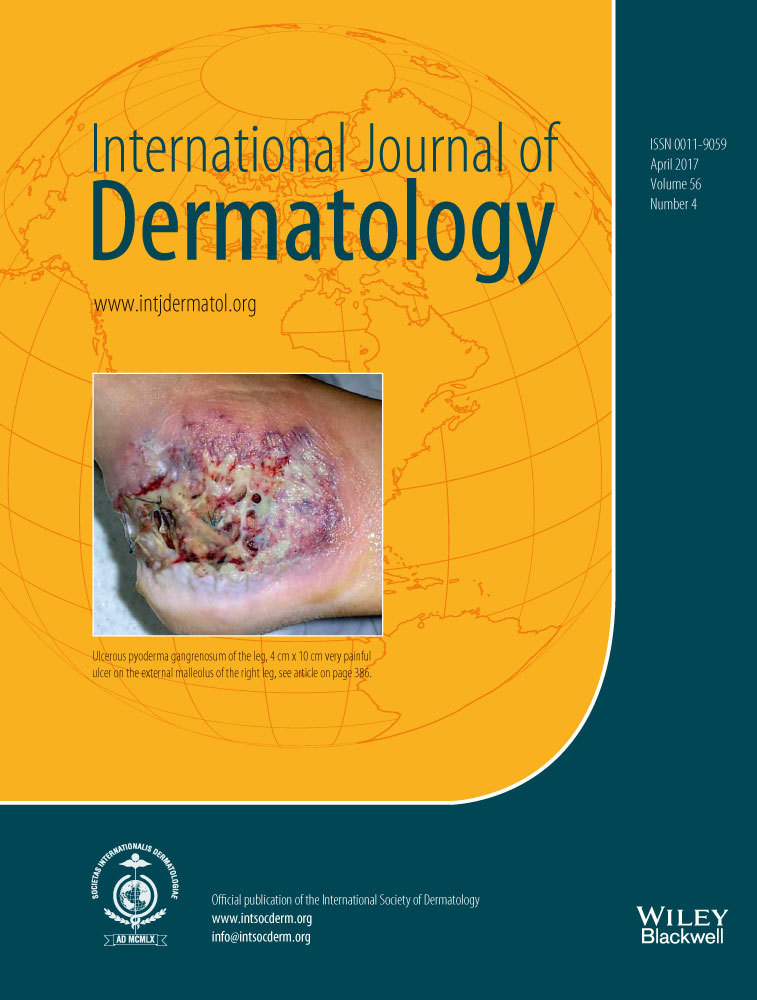Cutaneous Cryptococcus albidus infection
Alíz Gyimesi MD
Department of Dermatology, Venereology and Oncodermatology, University of Pécs, Pécs, Hungary
Search for more papers by this authorAnna Bátor MD
Department of Dermatology, Markusovszky University Teaching Hospital, Szombathely, Hungary
Search for more papers by this authorPetra Görög MD
Department of Dermatology, Markusovszky University Teaching Hospital, Szombathely, Hungary
Search for more papers by this authorEnikő Telegdy MD, PhD
Department of Dermatology, Markusovszky University Teaching Hospital, Szombathely, Hungary
Search for more papers by this authorÉva Szepes MD
Department of Dermatology, Venereology and Oncodermatology, University of Pécs, Pécs, Hungary
Search for more papers by this authorÁgnes Kappéter MD
Department of Infectology, University of Pécs, Pécs, Hungary
Search for more papers by this authorRolland Gyulai MD, PhD
Department of Dermatology, Venereology and Oncodermatology, University of Pécs, Pécs, Hungary
Search for more papers by this authorCorresponding Author
Zsuzsanna Lengyel MD, PhD
Department of Dermatology, Venereology and Oncodermatology, University of Pécs, Pécs, Hungary
Correspondence
Zsuzsanna Lengyel, md, phd
Akác u. 1.
H-7632 Pécs
Hungary
E-mail: [email protected]
Search for more papers by this authorAlíz Gyimesi MD
Department of Dermatology, Venereology and Oncodermatology, University of Pécs, Pécs, Hungary
Search for more papers by this authorAnna Bátor MD
Department of Dermatology, Markusovszky University Teaching Hospital, Szombathely, Hungary
Search for more papers by this authorPetra Görög MD
Department of Dermatology, Markusovszky University Teaching Hospital, Szombathely, Hungary
Search for more papers by this authorEnikő Telegdy MD, PhD
Department of Dermatology, Markusovszky University Teaching Hospital, Szombathely, Hungary
Search for more papers by this authorÉva Szepes MD
Department of Dermatology, Venereology and Oncodermatology, University of Pécs, Pécs, Hungary
Search for more papers by this authorÁgnes Kappéter MD
Department of Infectology, University of Pécs, Pécs, Hungary
Search for more papers by this authorRolland Gyulai MD, PhD
Department of Dermatology, Venereology and Oncodermatology, University of Pécs, Pécs, Hungary
Search for more papers by this authorCorresponding Author
Zsuzsanna Lengyel MD, PhD
Department of Dermatology, Venereology and Oncodermatology, University of Pécs, Pécs, Hungary
Correspondence
Zsuzsanna Lengyel, md, phd
Akác u. 1.
H-7632 Pécs
Hungary
E-mail: [email protected]
Search for more papers by this author
References
- 1Arendrup MC, Boekhout T, Akova M, et al. ESCMID and ECMM joint clinical guidelines for the diagnosis and management of rare invasive yeast infections. Clin Microbiol Infect 2014; 20: 76–98.
- 2Khawcharoenporn T, Apisarnthanarak A, Mundy LM. Non-neoformans cryptococcal infections: a systematic review. Infection 2007; 35: 51–58.
- 3Endo JO, Klein SZ, Pirozzi M, et al. Generalized Cryptococcus albidus in an immunosuppressed patient with palmopustular psoriasis. Cutis 2011; 88: 129–132.
- 4Hoang JK, Burruss J. Localized cutaneous Cryptococcus albidus infection in a 14-year-old boy on etanercept therapy. Pediatr Dermatol 2007; 24: 285–288.
- 5Narayan S, Batta K, Colloby P, et al. Cutaneous cryptococcus infection due to C. albidus associated with Sézary syndrome. Br J Dermatol 2000; 143: 632–634.
- 6Töröcsik D, Gergely L, Veres I, et al. Cutaneous cryptococcosis mimicking basal cell carcinoma in a patient with Sézary syndrome. Acta Derm Venereol 2012; 92: 286–287.
- 7Marques SA, Bastazini I Jr, Martins AL, et al. Primary cutaneous cryptococcosis in Brazil: report of 11 cases in immunocompetent and immunosuppressed patients. Int J Dermatol 2012; 51: 780–784.
- 8Negroni R. Cryptococcosis. Clin Dermatol 2012; 30: 599–609.




